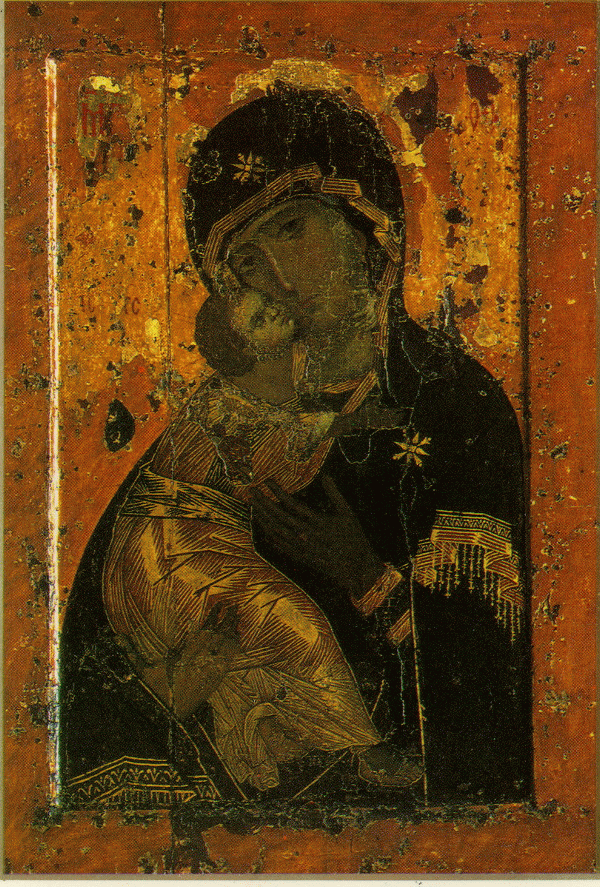Icons and Religion
Russian Icons began as a form of Christian
art. They were created so that believers
could have pictures to help them think about God. There
were many different images of Jesus Christ and
his mother, Mary. The different images
used symbols
to help the people think about God in different ways.
(In Christian theology, Jesus is the Son of God the Father
and
is God, himself.) Images of saints were
also
popular, because they were examples of people who had lived holy lives. Groups of icons were used to show church
festivals.
According to religious tradition, some icons
are associated with miracles. These
miracles are supposed to be caused by the faith of the people
praying before them. The icons do not have magic power of their own.


| Caption: One of the most famous icons is of the Virgin of Vladimir (Vladimirskaya Theotocos). According to legend, it was painted by the Apostle Luke. He wrote of one of the four Gospels, the Biblical stories of Jesus’ life. Because Luke knew Mary, Jesus’ mother, this icon is supposed to show what she really looked like. Also, according to tradition, this icon is connected to a miracle. St. John Damascus is supposed to have prayed in front of this icon for his hand to be reattached after it had been cut off. His prayer was granted. (These are two scans of the same icon.) |
Icons did not change very much over the
centuries. This is true even though they
have been painted by many different artists in many different countries
over many different centuries. Icon
artists had to obey strict church rules (canons) about the way they
could paint. These rules limited the styles they could use.
The canons were made so that artists could not paint their own versions of God or holy people. Icons
were supposed to show unchanging spiritual truths.
The people thought, If God doesn’t change, why should the
way we show Him change? In religious
terms, icons are much more than pictures--they are symbols. They could
never be just portraits of saints or divine figures. They are a
"likeness" (podobi e) of what the figures represent.
| Interesting
Fact: Some people were very angry at
the idea that pictures could be used to represent their God. They believed that their God was eternal, all knowing, and all powerful. They felt that showing their God as a human was a kind of lie. These people became so angry that they broke into homes and churches to break the icons there. Because of their actions, we now use the word iconoclast (image breaker) for anyone who one who attacks other people’s beliefs or institutions. |
Until the eighteenth century, icons were used only for prayer. Many were used to decorate churches while others were kept in people’s homes. Icons kept in people’s homes might show Jesus and/or Mary, his mother. Or, they might show a saint that someone in the family was named for. Icons kept at home were put in a place of honor—the krasniy ugol (beautiful corner). Both at home and in church, may bow down or kneel before an icon, or kiss it, as a way of howing their feelings toward the being the icon represents.